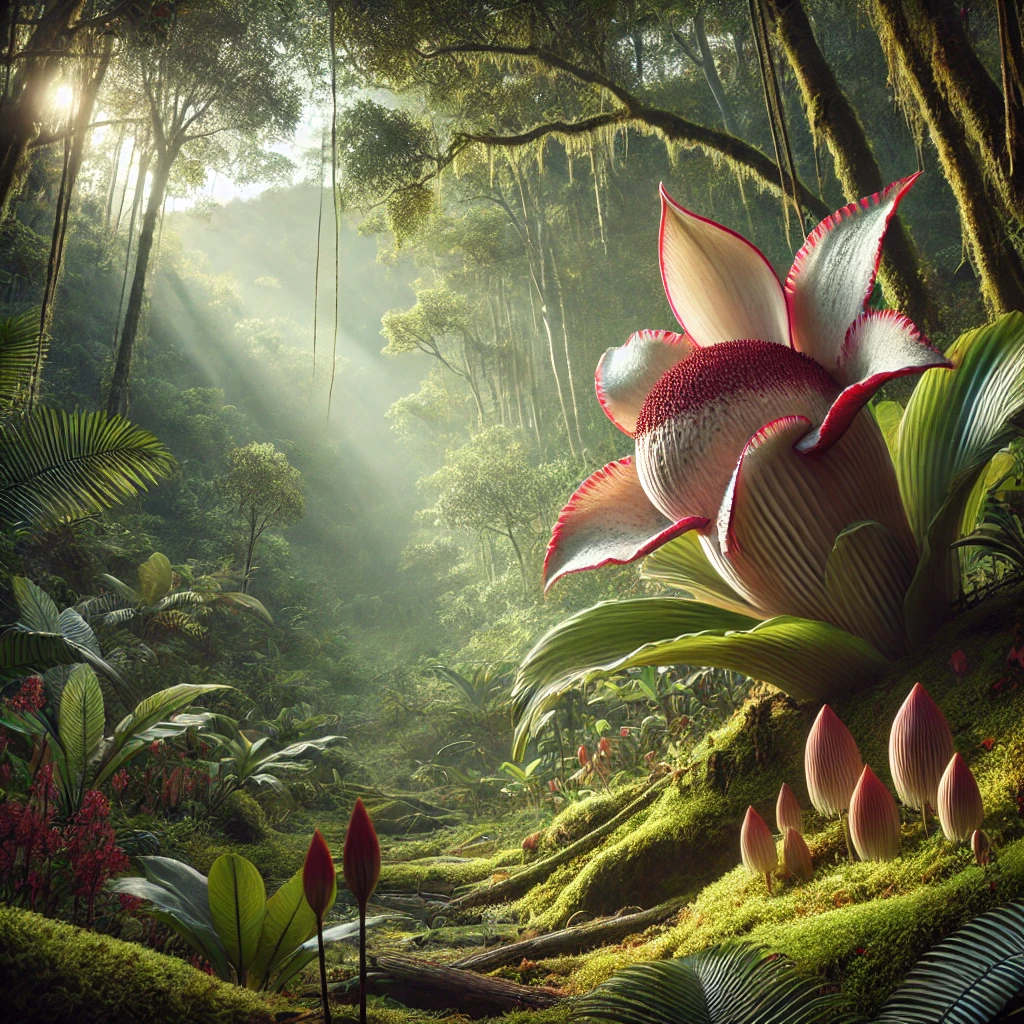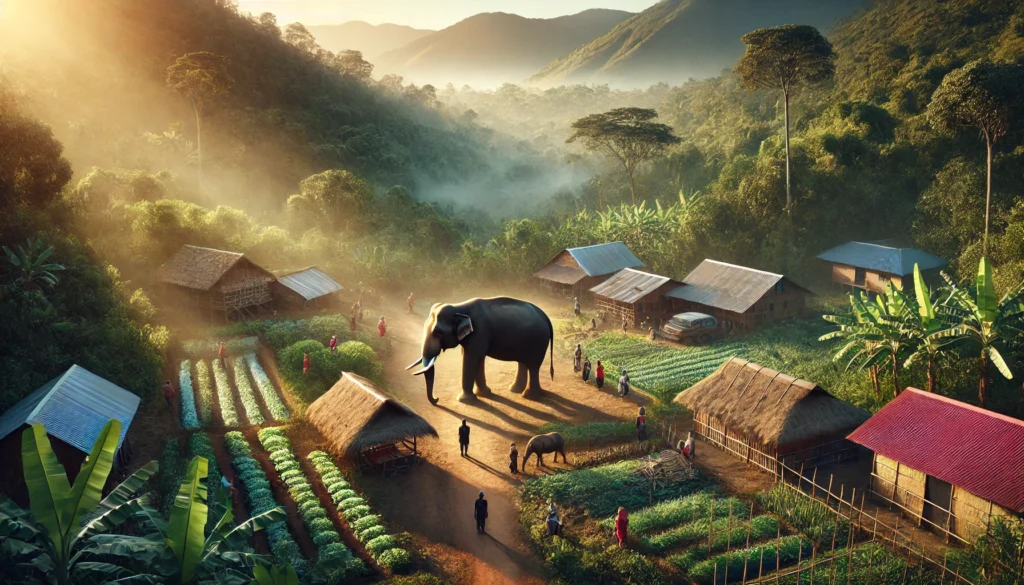Welcome, nature enthusiasts and plant lovers! Today, we’re diving into the lush world of the Philippines’ endangered plant species. Now, you might be thinking, “Plants? Endangered? Aren’t they everywhere?” Well, my chlorophyll-filled friends, you’d be surprised to learn that some of our leafy pals are facing a bit of a crisis.
The Philippines, an archipelago of over 7,000 islands, is a veritable treasure trove of biodiversity. It’s like Mother Nature decided to throw a party and invited all her favorite plants to show up. But lately, some of these green guests have been playing an unwanted game of hide-and-seek, and we’re not finding them as easily as we used to.
In this blog, we’ll explore the fascinating world of endangered plant species in the Philippines, their importance, the threats they face, and what we can do to help. So, grab your imaginary magnifying glass, put on your explorer’s hat, and let’s embark on this botanical adventure!
The Green Scene: Understanding Biodiversity in the Philippines
Before we dive into the nitty-gritty of endangered plants, let’s set the stage with some mind-blowing facts about the Philippines’ biodiversity. This country isn’t just a tropical paradise for beach-goers and mango lovers; it’s a hotspot of plant diversity that would make even the most seasoned botanist weak in the knees.
The Philippines is home to an estimated 10,000 to 14,000 plant species, with about 40-45% of them found nowhere else in the world. That’s right, folks – we’re talking about plants that are as uniquely Filipino as balut or jeepneys. These endemic species are the botanical equivalent of rare Pokémon cards, and trust me, plant collectors worldwide are itching to “catch ’em all.”
But here’s the kicker: while the Philippines is bursting at the seams with plant diversity, it’s also, unfortunately, a leader in another less flattering category – deforestation. It’s like the country decided to excel in two completely opposite fields, and now we’re left with a botanical version of “The Good, the Bad, and the Ugly.”
The Good, the Bad, and the Leafy
Let’s break down this biodiversity bonanza with some numbers:
| Category | Number |
|---|---|
| Total plant species | 10,000 – 14,000 |
| Endemic plant species | 4,000 – 6,300 |
| Threatened plant species | Over 700 |
| Plant families represented | 225 |
| Plant genera represented | Over 1,500 |
These numbers paint a picture of a country that’s practically bursting with botanical bling. But as with any treasure, there are always those who want to plunder it. Enter the villains of our story: deforestation, habitat loss, and climate change. These ne’er-do-wells have been causing quite a ruckus in the Philippine plant world, turning our lush green paradise into more of a patchy, balding landscape.
The Endangered All-Stars: Meet the Plant-astic Four
Now that we’ve set the stage, it’s time to meet some of the stars of our show. These are the plants that have made it to the botanical version of the endangered species list – a list that no plant wants to be on, trust me. It’s like being nominated for an award you really, really don’t want to win.
1. The Philippine Eagle-Wood (Aquilaria malaccensis)
First up, we have the Philippine Eagle-Wood, also known as the agarwood. This tree isn’t just endangered; it’s practically the James Bond of the plant world – rare, valuable, and in constant danger. The Eagle-Wood is prized for its resin, which is used in perfumes, incense, and traditional medicine. It’s so valuable that it’s nicknamed “liquid gold,” making it a prime target for illegal logging.
Fun fact: The Eagle-Wood only produces its precious resin when it’s infected by a certain type of mold. Talk about making the best out of a bad situation!
2. The Jade Vine (Strongylodon macrobotrys)
Next on our list is the Jade Vine, a plant so stunning it looks like it was designed by a committee of unicorns and fairies. This climbing plant produces cascades of turquoise flowers that seem to glow in the dark. It’s like nature’s own neon sign, except instead of advertising a 24-hour diner, it’s advertising “Hey, I’m rare and beautiful, please don’t let me go extinct!”
The Jade Vine is threatened by habitat loss and the decline of its natural pollinators. It turns out that bats are its main pollinators, and let’s just say that bats aren’t having the best PR year.
3. The Staghorn Fern (Platycerium grande)
The Staghorn Fern looks like what would happen if a deer and a fern had a baby – which, let’s be honest, would be a pretty awesome sci-fi movie plot. This epiphytic fern grows on trees and has fronds that resemble deer antlers. It’s nature’s way of saying, “Who needs hunting trophies when you can have living plant art?”
Unfortunately, the Staghorn Fern’s unique appearance has made it a target for collectors and the horticulture trade. It’s the botanical equivalent of being too popular for your own good.
4. The Waling-Waling Orchid (Vanda sanderiana)
Last but not least, we have the Waling-Waling Orchid, also known as the “Queen of Philippine Flowers.” This orchid is so fabulous it makes other flowers look like they’re not even trying. With its large, showy flowers in shades of pink, purple, and white, it’s the diva of the plant world.
The Waling-Waling has been over-collected from the wild for the ornamental plant trade, leading to its endangered status. It’s like the plant version of a child star – thrust into the spotlight too young and now struggling to cope with fame.
The Villain’s Lair: Threats to Philippine Plant Biodiversity
Now that we’ve met some of our endangered plant celebrities, let’s take a look at the dastardly villains threatening their existence. These are the forces that are turning our lush green paradise into more of a concrete jungle – and not the fun kind with talking animals and catchy songs.
1. Deforestation: The Chainsaw Massacre
Deforestation is like a bad haircut for the planet – it’s unsightly, damaging, and takes forever to grow back. In the Philippines, forests have been disappearing faster than you can say “photosynthesis.” Between 1990 and 2020, the Philippines lost about 1.5 million hectares of forest cover. That’s roughly equivalent to 2.1 million football fields, or if you prefer a more Filipino measurement, about 15 billion sacks of rice.
The causes of deforestation are many: logging (both legal and illegal), agriculture, mining, and urban expansion. It’s like everyone wants a piece of the forest pie, but they forgot that once the pie is gone, there’s no dessert left for anyone.
2. Habitat Loss: The Great Eviction
Habitat loss goes hand in hand with deforestation, like peanut butter and jelly, except this sandwich leaves a bad taste in everyone’s mouth. As forests disappear, so do the homes of countless plant species. It’s like a massive eviction notice served to Mother Nature, and she’s not happy about it.
Many of the Philippines’ endangered plants are endemic, meaning they’re found nowhere else in the world. When their habitats are destroyed, it’s not like they can just pack up and move to the next forest over. They’re stuck between a rock and a hard place – or more accurately, between a bulldozer and a concrete wall.
3. Climate Change: The Unwanted Greenhouse Effect
Ah, climate change – the uninvited guest at Earth’s party that just won’t leave. Rising temperatures, changing rainfall patterns, and more frequent extreme weather events are all taking their toll on Philippine plant species. It’s like Mother Nature cranked up the thermostat and forgot to turn it back down.
For plants, adapting to climate change is a bit like trying to run a marathon in flip-flops – possible, but incredibly challenging and not very comfortable. Some species might be able to migrate to more suitable areas, but for many of our endangered friends, it’s a case of adapt or perish.
4. Overexploitation: The Botanical Gold Rush
Remember those cool plants we talked about earlier? Well, it turns out that humans really, really like cool plants. So much so that we sometimes love them to death. Overexploitation for the ornamental plant trade, traditional medicine, and other uses has pushed many species to the brink of extinction.
It’s like we’re treating nature’s pharmacy and garden center like an all-you-can-grab buffet, forgetting that once these species are gone, they’re gone for good. No refills, no substitutions.
The Hero’s Journey: Conservation Efforts in the Philippines
But fear not, dear readers! All is not lost in this tale of botanical peril. Just when things seem darkest, heroes emerge to save the day. In this case, our heroes come in the form of conservation efforts, protected areas, and some pretty nifty scientific advancements.
1. Protected Areas: Nature’s Safe Houses
The Philippines has established a network of protected areas to safeguard its biodiversity. These are like gated communities for plants, except instead of keeping out door-to-door salespeople, they’re keeping out loggers and poachers.
As of 2020, the Philippines had 244 protected areas covering about 5.45 million hectares. That’s roughly 18% of the country’s total land area – not too shabby! These protected areas range from tiny islands to massive mountain ranges, providing safe havens for a wide variety of plant species.
2. Ex-Situ Conservation: The Botanical Witness Protection Program
Ex-situ conservation is like a witness protection program for plants. Instead of giving them new identities and relocating them to suburban neighborhoods, scientists grow endangered species in botanic gardens, seed banks, and other controlled environments.
The Philippines has several botanic gardens dedicated to preserving native species, including the Makiling Botanic Gardens and the Philippine National Botanic Garden. These places are like Noah’s Ark for plants, ensuring that even if a species disappears from the wild, it’s not lost forever.
3. Reforestation and Restoration: The Great Green Makeover
Reforestation efforts in the Philippines are like a massive home renovation project for Mother Nature. The National Greening Program, launched in 2011, aimed to plant 1.5 billion trees covering 1.5 million hectares by 2016. While the program faced challenges, it represents a significant step towards restoring the country’s forest cover.
Restoration projects don’t just involve planting trees willy-nilly. Scientists carefully select native species and design planting schemes to recreate natural ecosystems. It’s like being an interior designer for the great outdoors.
4. Community Involvement: It Takes a Village to Raise a Forest
Conservation efforts in the Philippines increasingly involve local communities. After all, who better to protect the plants than the people who live alongside them? Many projects now combine conservation with sustainable livelihood initiatives, proving that you can have your cake and eat it too – or in this case, have your forest and benefit from it too.
These community-based approaches are like neighborhood watch programs for nature. They empower local people to become stewards of their environment, turning potential threats into powerful allies in the fight against biodiversity loss.
The Plot Twist: Unexpected Allies in Plant Conservation
Just when you thought you knew all the players in this botanical drama, along come some unexpected allies to shake things up. These are the unsung heroes of plant conservation, the dark horses in the race to save biodiversity.
1. Traditional Knowledge: The Wisdom of the Ancients
Indigenous peoples and local communities in the Philippines have been living in harmony with nature for centuries. Their traditional knowledge about plants – their uses, growth patterns, and ecological roles – is like a treasure trove of information for conservationists.
By incorporating this traditional knowledge into conservation strategies, scientists are discovering new ways to protect and manage plant species. It’s like finding a cheat code for the game of biodiversity conservation.
2. Technology: Welcome to the Digital Jungle
Who says plants and technology don’t mix? From satellite imagery to DNA barcoding, cutting-edge tech is revolutionizing how we study and protect plant species. It’s like giving botanists superpowers – suddenly they can see through forest canopies, track individual plants, and even read plant DNA.
One cool example is the use of drones for seed dispersal in hard-to-reach areas. It’s like Uber Eats for trees – delivering seeds to just the right spot for optimal growth.
3. Social Media: #SaveThePlants
In an unexpected turn of events, social media has become a powerful tool for plant conservation. Platforms like Instagram and TikTok are helping to raise awareness about endangered species and conservation efforts. Who knew that the same app you use to share cat videos could also help save rare plants?
Citizen science initiatives, where regular people contribute to scientific research through apps and websites, are also gaining traction. It’s like crowdsourcing for conservation – harnessing the power of the masses to protect the masses of plants.
The Cliffhanger: What’s Next for Philippine Plant Conservation?
As we reach the end of our botanical adventure, you might be wondering, “What’s next?” Well, my green-thumbed friends, the future of plant conservation in the Philippines is as unpredictable as a seed in the wind. But one thing’s for sure – it’s going to take all of us to ensure a happy ending for our leafy protagonists.
1. Strengthening Legal Protections
The Philippines has laws protecting endangered species, but enforcement can be as patchy as a balding lawn. Strengthening these laws and ensuring they’re properly enforced is crucial. It’s like giving our plant friends their own team of lawyers and bodyguards.
2. Sustainable Development
Finding ways to develop economically while preserving biodiversity is the holy grail of conservation. It’s like trying to bake a cake without breaking any eggs – challenging, but not impossible with the right recipe.
3. Education and Awareness
Spreading the word about the importance of plant conservation is key. After all, you can’t protect what you don’t know exists. It’s time to make endangered plants as famous as endangered animals. Who says plants can’t be the next panda or tiger?
4. International Cooperation
Many of the challenges facing Philippine plants are global issues. International cooperation in research, funding, and policy-making is essential. It’s like forming a botanical Avengers team to save the world – one plant at a time.
The Final Chapter (For Now)
And there you have it, folks – the thrilling, sometimes tragic, but ultimately hopeful story of endangered plant species in the Philippines. From the majestic Eagle-Wood to the flamboyant Waling-Waling Orchid, these botanical wonders are facing threats on all sides. But with a combination of scientific know-how, community involvement, and a dash of human ingenuity, there’s hope for a greener future.
Remember, every great story needs heroes. In this tale of ecological peril and promise, you too can play a part. Whether it’s supporting conservation organizations, spreading awareness, or simply appreciating the plant life around you, every action counts.
So the next time you’re out in nature, take a moment to appreciate the green giants around you. Who knows? That unassuming shrub might just be a rare species waiting to be discovered. And if you happen to stumble upon a plant that looks like it’s wearing a “Help, I’m Endangered” t-shirt, maybe give your local botanist a call. Just don’t try to water it with your leftover soda – trust me, plants prefer their drinks non-carbonated.
Here’s to a future where our leafy friends aren’t just surviving, but thriving. After all, in the grand story of life on Earth, plants were here first – it’s about time we gave them the sequel they deserve!
Disclaimer: This blog post is based on information available up to 2020. While we strive for accuracy, the world of plant conservation is constantly evolving. If you spot any inaccuracies or have updated information, please let us know so we can keep this post as fresh as a newly unfurled leaf. Remember, in the world of endangered species, staying informed is key – we wouldn’t want to bark up the wrong tree!









